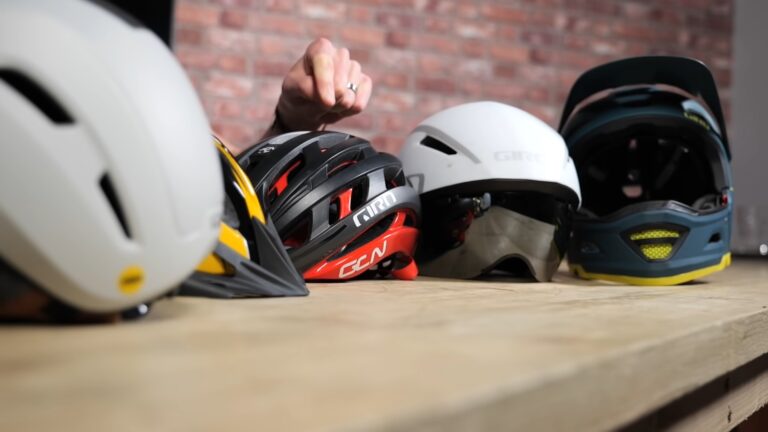A bike helmet is designed to protect your head from impact in the event of a fall or collision. While they are not bulletproof, they can provide some level of protection against small-caliber firearms.
Can A Bike Helmet Stop A Bullet
A bike helmet will not stop a bullet from penetrating your skull. However, it can help to deflect the bullet and reduce the amount of damage it causes. The level of protection will depend on the type of helmet you are wearing and the caliber of the bullet.
For example, a helmet made of Kevlar or another similar material can provide more protection than a standard bicycle helmet. If you are shot in the head with a small-caliber handgun, the helmet may be able to deflect the bullet and reduce the amount of damage it causes.
However, if you are shot with a high-powered rifle, the helmet is unlikely to provide much protection. The best way to protect yourself from gunfire is to wear body armor that is designed to stop bullets.
While a bike helmet cannot stop a bullet, it can still provide some level of protection against smaller caliber firearms. If you are ever in a situation where someone is firing a gun at you, it is important to remember that every little bit of protection can help.
What Happens When A Bullet Hits Your Helmet?
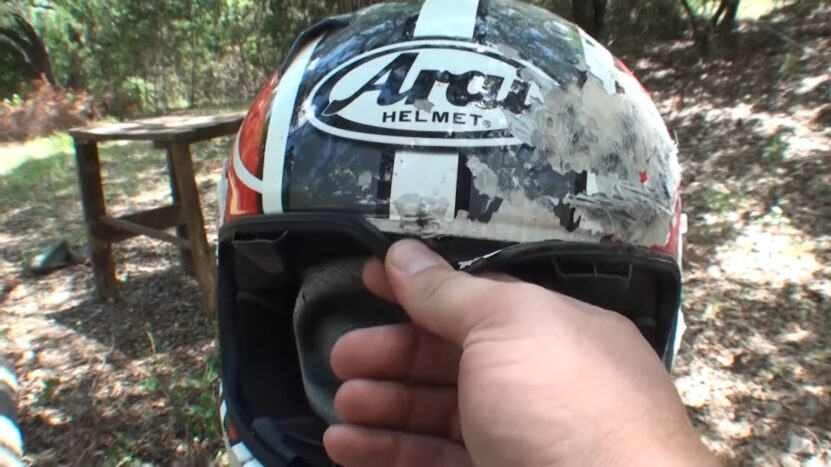
When a bullet hits a helmet, the energy of the impact is transferred to the headgear, causing it to deform. The deformation absorbs some of the energy and spreads it over a larger area, dissipating the force and protecting the head from serious injury. While helmets are designed to protect against bullets, they are not impenetrable. A well-aimed shot can penetrate a helmet, and even a glancing blow can cause severe damage.
That’s why it’s important to wear proper headgear at all times when engaging in activities where there is a risk of being hit by a bullet. When a bullet hits your helmet, it can cause a number of different types of injuries. The most serious type of injury is a penetrating brain injury, which can occur if the bullet penetrates the skull and enters the brain.
This type of injury can be fatal or result in permanent disability. Other potential injuries include fractures to the skull or facial bones and lacerations or contusions (bruising) of the brain. Bulletproof helmets are designed to protect against more than just bullets they can also help protect against flying debris, blunt force trauma, and extreme temperatures. However, no helmet can protect against every type of threat, so it’s important to choose the right helmet for the situation.
If you’re ever in a situation where someone is firing at you, remember that the best way to stay safe is to take cover and avoid being hit altogether. If you are hit, seek medical attention immediately. Even if your helmet protects you from serious injury, you may still experience some symptoms of concussion, so it’s important to be evaluated by a medical professional.
Do Metal Helmets Stop Bullets?
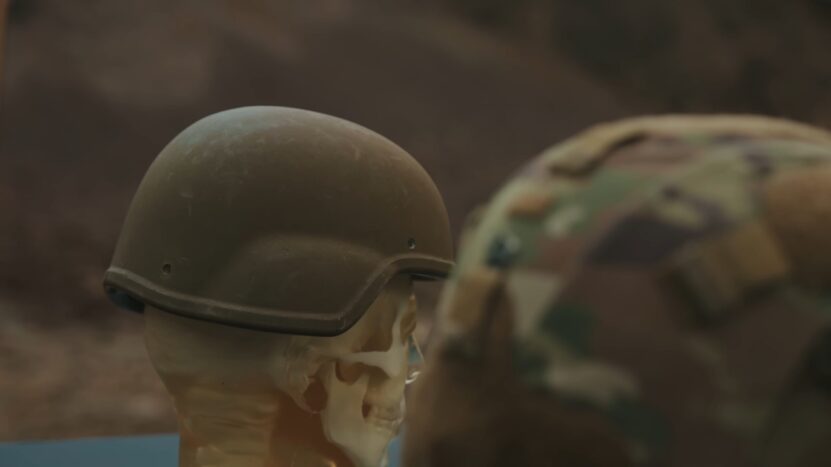
No, metal helmets do not stop bullets. While metal is strong and durable, it is not impenetrable. Bullets can pierce metal, making it an ineffective material for stopping them. There are different types of helmets that are designed to protect against different threats. For example, there are Kevlar helmets that are designed to protect against shrapnel and other flying debris.
There are also bulletproof helmets that can offer some protection against bullets, but they are not completely effective. The best way to protect yourself from bullets is to wear body armor. Body armor is made from materials that are designed to stop bullets from penetrating. It is important to choose the right type of body armor for the threat you are facing.
Metal helmets will not stop bullets from harming you. If you are looking for protection, invest in body armor instead. It is the best way to keep yourself safe from bullets.
How Strong Is A Bike Helmet
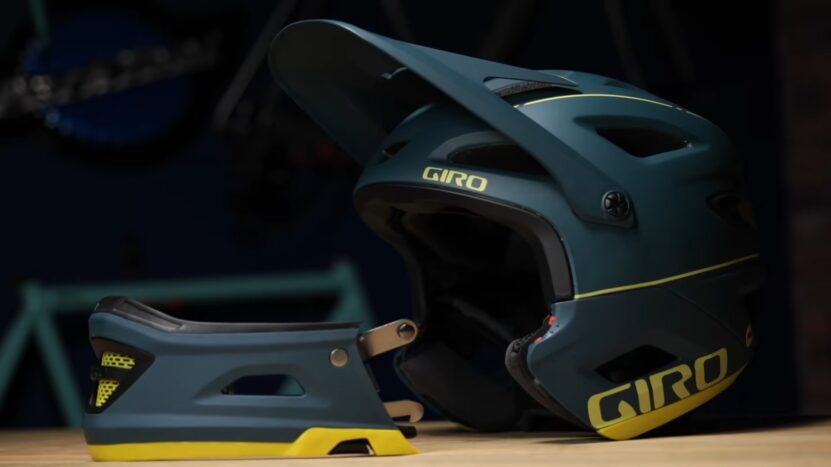
When it comes to bike helmets, there is no one-size-fits-all answer. The level of protection that a helmet can provide depends on a number of factors, including its construction, fit, and how well it is designed. A bike helmet’s primary function is to protect your head from impact in the event of a crash. A good helmet will have a hard outer shell that dissipates the force of an impact, and a soft inner liner that absorbs energy and protects your head from being jarred.
The fit of a helmet is also important. A properly fitting helmet should be snug but not too tight, and it should sit level on your head with the straps fastened. The straps should also be adjusted so that the helmet is secure but not too tight. Finally, a good bike helmet should have good ventilation to keep your head cool, and it should be comfortable to wear for extended periods of time.
When choosing a bike helmet, it is important to consider all of these factors. There is no one perfect helmet for everyone, but by taking the time to find a helmet that fits well and is comfortable to wear, you can help ensure that you are protected in the event of a crash.
Tips To Choose A Bike Helmet
A good bike helmet can save your life in the event of an accident. But with so many helmets on the market, how do you choose the right one? Here are a few tips to help you make an informed decision:
- Make sure the helmet fits properly. It should be snug but not too tight and sit level on your head.
- Look for a helmet that has been certified by the CPSC or another independent testing agency.
- Choose a helmet with plenty of ventilation to keep you cool on hot days.
- If you wear glasses, make sure the helmet is compatible with them.
- Consider your budget and find a helmet that fits within it.
With these tips in mind, you should be able to find a bike helmet that will keep you safe on the road.
Do Level 3 Helmets Exist
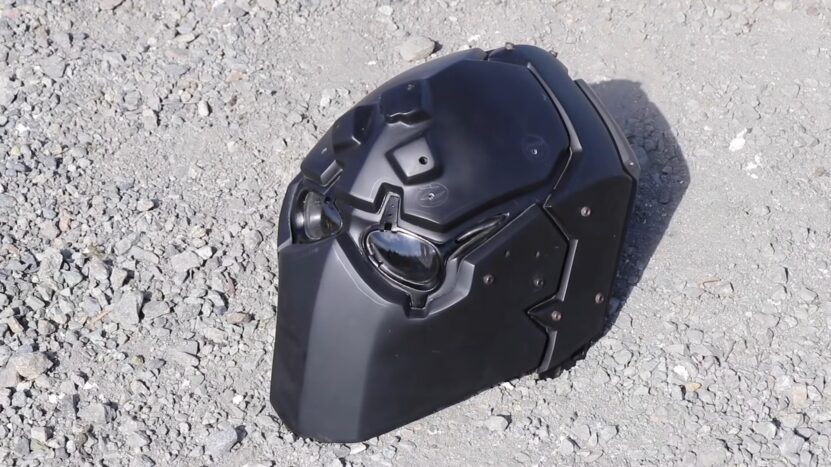
Some riders may be wondering if there are any level 3 helmets out there. The answer is yes, there are a few models that have been certified to this higher safety standard. However, they are not as common as the more commonly seen level 2 helmets. One of the most popular level 3 helmets on the market is the Bell RS-1. This helmet features a full-face design with a polycarbonate shell. It also has an EPS liner for added protection. The helmet has been certified to both the DOT and Snell M2015 safety standards.
Another option is the Giro Reverb. This helmet also has a full-face design and is made from polycarbonate. It includes an EPS liner and is certified to the DOT safety standard. These are just a few of the options that are available for riders who are looking for a level 3 helmet. However, it is important to keep in mind that these helmets are not as common as the more commonly seen level 2 helmets. So, if you are looking for a higher level of protection, you may want to consider one of these models.
Why Do Cyclists Not Wear Helmets?
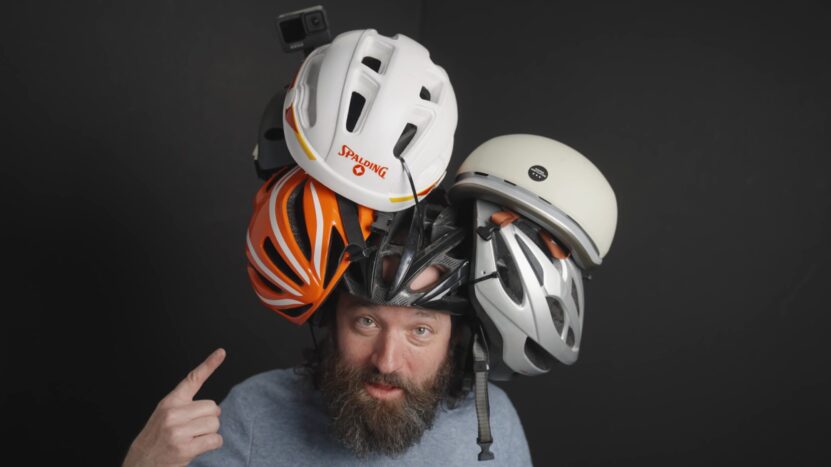
There are a number of reasons why cyclists may choose not to wear helmets. In some cases, it may be because they feel that helmets are uncomfortable or inconvenient. In other cases, cyclists may believe that wearing a helmet is not necessary or effective in preventing injuries.
Some research has suggested that wearing a helmet can actually increase the risk of certain types of injuries, such as neck injuries. This is because the helmet can add extra weight and bulk to the head, which can put a strain on the neck. There is also some evidence that helmets can obscure a cyclist’s vision, which can make it more difficult to spot potential hazards on the road.
Ultimately, the decision of whether or not to wear a helmet is a personal one. Some cyclists choose to wear helmets, while others do not. There is no right or wrong answer, and each cyclist must decide what is best for them.
Five Things You Need To Know About Bike Helmets
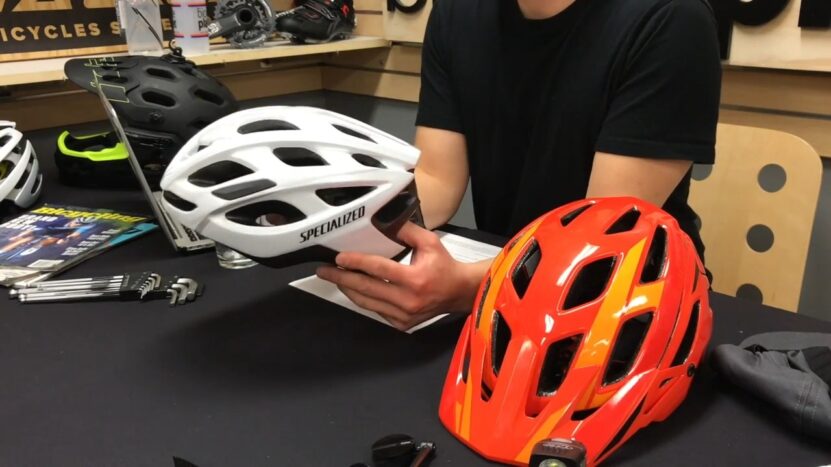
- Bike helmets are not required by law in all states, but it is highly recommended that cyclists wear them at all times.
- Helmets can reduce the risk of head injuries by up to 85%.
- Make sure the helmet fits properly before each ride. A correctly fitting helmet should sit level on your head and fasten securely.
- Bike helmets are made from a variety of materials, including polystyrene foam and Kevlar.
- Some bike helmets come equipped with additional safety features, such as visors and reflective strips.
7 Tips For Buying A Bike Helmet
1. Do Your Research
There are a lot of different bike helmets out there, so it’s important to do your research before you buy one. You’ll want to find a helmet that fits well and is comfortable to wear, so make sure to try on a few different types before you decide which one to buy.
2. Consider Your Budget
Bike helmets can range in price from around $30 to over $200, so it’s important to consider your budget when shopping for one. If you’re a casual rider, you may not need to spend as much on a helmet as someone who rides frequently or competitively.
3. Think About Safety Features
When you’re looking at bike helmets, safety is obviously the most important factor to consider. Make sure to look for a helmet that has been certified by the CPSC or other safety organizations. Additionally, look for features like reflective material and visors that can help make you more visible to other cyclists and drivers.
4. Choose The Right Size
Bike helmets come in a variety of sizes, so it’s important to choose the right one for your head. The best way to determine your size is to measure your head circumference with a tape measure. Once you have your measurements, consult a size chart to find the right helmet size.
5. Consider Your Riding Style
Your riding style should also be taken into consideration when you’re choosing a bike helmet. If you plan on doing a lot of off-road riding, you’ll need a different helmet than someone who plans on sticking to paved roads. Make sure to choose a helmet that’s designed for your specific riding style.
6. Pay Attention To The Straps
The straps on your helmet are just as important as the helmet itself. They need to be adjustable so that you can get a snug, comfortable fit. Additionally, the straps should stay in place while you’re riding, so make sure to try them out before you buy.
7. Don’t Forget About Accessories
There are a few accessories that can make your bike helmet even more effective. Helmet covers can help make you more visible, while visors can protect your eyes from the sun and other elements. Make sure to consider these items when you’re choosing a bike helmet.
Do WW2 Helmets Stop Bullets?
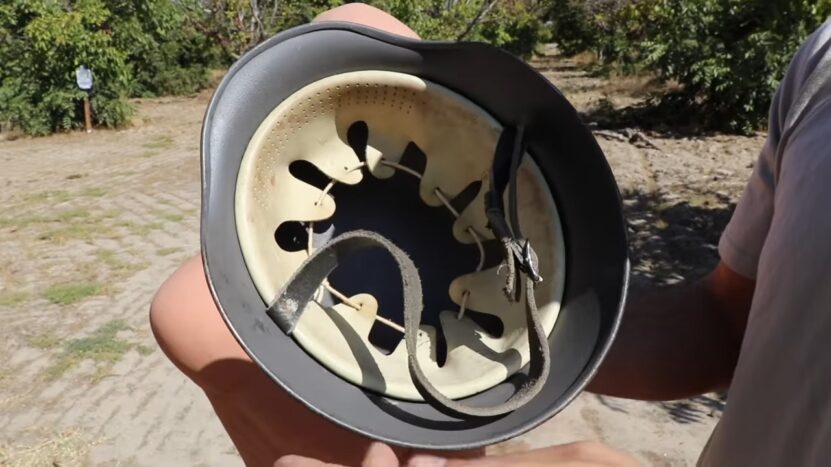
No, WW2 helmets did not stop bullets. They were designed to protect the wearer’s head from shrapnel and debris, and to some extent, from concussive forces. However, they would not have provided any significant protection against a direct hit from a bullet. Some soldiers did anecdotally report that their helmets saved them from being shot in the head, but this is likely due to the fact that bullets often ricochet or fragment when they hit hard surfaces like helmets. In any case, it is clear that the primary purpose of WW2 helmets was not to stop bullets.
Some say that the U.S. M1 steel helmet saved more lives during WWII than any other item of personal equipment. The M1 steel helmet was first introduced in 1941 and was a standard issue for American troops throughout the war. It was made from 14-gauge mild steel and weighed about 3 pounds. The helmet had a wide brim to protect the wearer’s ears and neck from shrapnel, and a liner made of cork or plastic that absorbed the impact and helped to fit the helmet snugly to the head.
While the M1 steel helmet did offer some protection from bullets and shrapnel, it was not bulletproof. In fact, many soldiers were killed or wounded by bullets that penetrated their helmets. However the helmet did offer a significant degree of protection, and it is estimated that it saved the lives of thousands of soldiers during the war. So, while the M1 steel helmet did not stop all bullets, it did offer a degree of protection that was vital to the soldiers who wore it. It is a testament to the skill and bravery of the American troops who fought in WWII.
Conclusion
A bike helmet cannot stop a bullet. However, it can help to protect your head from other impacts and injuries. Wearing a helmet while riding your bike can reduce the risk of sustaining a serious head injury by up to 85%.
While a bike helmet cannot stop a bullet, it is still an important piece of safety equipment that can help to protect your head from other injuries. If you are going to be riding your bike, make sure to always wear a helmet.

